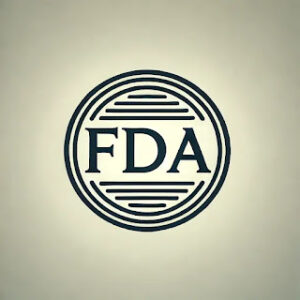Essential Drug Delivery Outputs (EDDOs) for Devices Intended to Deliver Drugs and Biological Products

Guidance Type: Draft Guidance
Guidance Type Meaning: A draft guidance document represents the FDA’s preliminary thinking on a topic and is distributed for comment purposes only. It allows stakeholders to provide feedback before the final guidance is issued.
Publication Date: June 2024
Scope: The focus of this guidance is the information and data developed and submitted to the FDA regarding EDDOs for devices and device constituent parts of CDER-led and CBER-led combination products intended for the delivery of a human drug, including a biological product. Examples of products that are within the scope of this guidance include syringes, injectors (e.g., autoinjector, on-body injector), infusion products (e.g., infusion pumps), nasal sprays, inhalers, nebulizers, and vaginal systems.
Action Requested: Comments and suggestions regarding this draft document should be submitted within 90 days of publication in the Federal Register. Electronic comments can be submitted to https://www.regulations.gov, and written comments to the Dockets Management Staff at the FDA.
Key Points of the Guidance
- Identification of Essential Drug Delivery Outputs (EDDOs):EDDOs refer to the design outputs crucial for ensuring the proper delivery of the intended drug dose to the target site. The identification process involves filtering all design outputs to isolate those that meet the EDDO criteria.
- Verification and Validation of EDDOs:Verification and validation activities are essential to confirm that EDDOs perform as intended under various conditions. This includes preconditioning to simulate stressors like temperature, humidity, and shipping conditions. Design verification testing ensures that EDDOs maintain performance throughout the product’s lifecycle.
- Control Strategies for EDDOs:A control strategy ensures that each lot of the final product conforms to the design outputs. This strategy may involve upstream controls (e.g., in-process controls, control of process parameters) and downstream controls (e.g., lot release testing). The control strategy should be risk-based, with the complexity of controls corresponding to the product’s risk level.
- Information to Include in Applications:The guidance specifies the information to be included in investigational, marketing, and post-market change applications. This includes a description of the device, performance data, and verification and validation reports.
- Interactions with the FDA:The guidance provides recommendations on how to interact with the FDA regarding EDDOs. It encourages applicants to discuss their approaches and any alternative methods with the FDA staff responsible for the guidance. Formal meetings or communications with the FDA are recommended to obtain feedback and ensure alignment with regulatory expectations. For instance, if an applicant intends to use an alternative design verification approach, they should provide an explanation and rationale for this approach and request Agency feedback.
Summary of Major Sections
- Introduction:Outlines the scope and purpose of the guidance, focusing on devices and combination products intended for drug delivery.
- Scope and Definition:Defines EDDOs and describes the types of products within the scope of the guidance.
- Background:Provides context on design control requirements, emphasizing the importance of verifying and validating EDDOs to ensure drug delivery performance.
- Overview of EDDO Processes:Describes the processes for identifying, controlling, and maintaining EDDOs.
- Identifying EDDOs:Details the steps for identifying EDDOs, including the filtering process to isolate system-level design outputs.
- Verifying and Validating EDDOs:Provides recommendations for verifying and validating EDDOs, including preconditioning and design verification testing.
- Control Strategies for EDDOs:Explains the development of control strategies to ensure consistent EDDO performance throughout the manufacturing process.
- Information to Include in Applications:Specifies the data and documentation required in various types of regulatory submissions.
- Interactions with the FDA:Offers guidance on engaging with the FDA to discuss and obtain feedback on EDDO-related approaches and methodologies. It emphasizes the importance of clear communication and seeking FDA input to align with regulatory requirements.
This draft guidance, once finalized, will provide a comprehensive framework for ensuring the safe and effective delivery of drugs through medical devices. Stakeholders are encouraged to review the document and provide their comments to help shape the final version.


